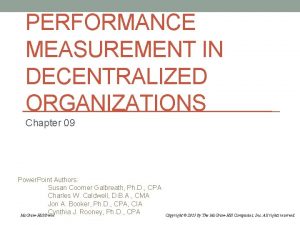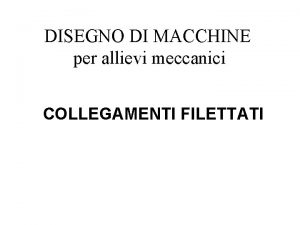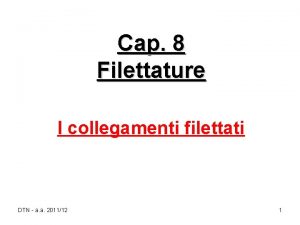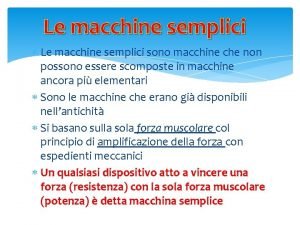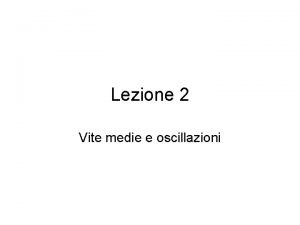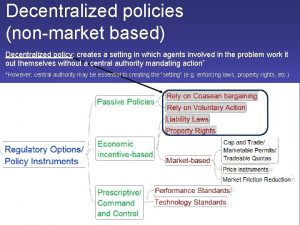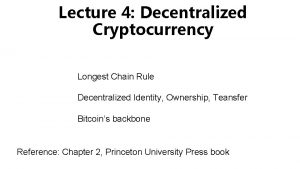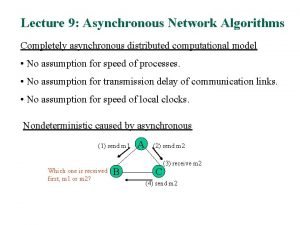Vite A High Performance Asynchronous Decentralized Application Platform








- Slides: 8

Vite: A High Performance Asynchronous Decentralized Application Platform

Introduction • Vite is a universal d. App platform that can support a set of smart contracts, each of which is a state machine with independent state and different operational logic, which can communicate by message delivery. • Rule: 1 - the system is a transactional state machine, 2 - The state of the system is the world state 3 - The world state consists of is composed of the state of each independent account. 4 - Transactions is events that cause changes in account status Some Important Definitions: • Definition 1. 1 (Transactional State Machine): a transactional state machine is a 4 -tuple: (T, S, g, §), where T is a set of transactions, S is a set of states, g€ S is initial state (genesis block), and § is state transaction function. • Definition 1. 2 (Semantics of Transactional State Machine): The semantics of a transactional state machine is a discrete transition system. • Definition 1. 3 (Ledger): ledger is composed of a set of transactions, with an abstract data type recursively constructed. Ledgers are usually used to represent a group of transactions • Fork: According to the same group of transactions, different valid books can be constructed, but they represent a different order of transactions and may cause the system to enter a different state. When this happens, it is usually called ”fork”. In reality, there are often some transactions that satisfy the commutative laws, but because of the problem of account design, they frequently cause forks. When the system starts from an initial state, receives two forked ledgers and ends up in the same state, we call these two ledgers a false forked ledger.

Ledgers • The role of ledgers is to determine the order of transactions, and the order of transactions will affect the following two aspects: 1 -Consistency of status 2 -Effectiveness of Hash • The design of the ledger also has two main objectives: 1 -Reducing the false fork rate 2 - Tamper proof • In the picture, the most-left side is a common set based structure in a centralization system without any tamper proofing features; the most right side is a typical block chain Ledger with the best tamper proof features; between the two, there are two DAG ledgers, the block-lattice account used by Nano on the left; and the right side, the tangle is used by IOTA. Block lattice maintains less partial order relations and is more suitable for the accounting structure of high performance decentralized application platforms. Because of its poor tampering characteristics, it can expose security risks, so far, no other projects adopt this ledger structure except Nano. • Vite adopts the DAG ledger structure. At the same time, by introducing an additional chain structure Snapshot Chain and improving the consensus algorithm, the shortcomings of block-lattice security are successfully made up, and the two improvements

• Definition 2. 2 (Transaction Decomposition)Dividing a transaction with a degree of freedom greater than 1 into a set of single degree of freedom transactions, named Transaction Decomposition. A transfer transaction can be split into a sending transaction and a receiving transaction; a contract call transaction can be split into a contract request transaction and a contract response transaction; a message call within each contract can be split into a contract request transaction and a contractual response transaction. • Definition 2. 6 (Vite Ledger): Vite Ledger is the strict poset composed by set of T of the given transaction, and the partial poset < • A strict poset can correspond to a DAG structure. As shown in the figure below, circles represent transactions, and arrows denote dependencies between transactions a->b indicates that a depends on b. • The Vite ledger is structurally similar to block-lattice. Transactions are divided into request and response transactions, each of which corresponds to a separate block, each account Ai corresponds to a chain, a transaction pair, and a response transaction referencing the hash of its corresponding request transaction.

Snapshot Chain Transaction Confirmation: • Definition 3. 1 (Transaction Confirmation) when the probability of a transaction being rolled back is less than a given threshold ε, the transaction is called confirmed. • Definition of snapshot chain: (Snapshot block and snapshot chain)a snapshot block that stores a state snapshot of a Vite ledger, including the balance of the account, the Merkle root of the contract state, and the hash of the last block in each account chain. The snapshot chain is a chain structure composed of snapshot blocks, and the next snapshot block refers to the hash of the previous snapshot block • The state of a user account contains the balance and the hash of the last block of the account chain; in addition to the above two fields, the state of a contract account contains the Merkle root hash of it

• Definition 3. 3 (Transaction Confirmation in Vite) In Vite, if a transaction is snapshot by snapshot chain, the transaction is confirmed. , the depth of the snapshot block in the first snapshot, is called the confirmation number of the transaction • Double Spend Transactions: The natural security flaws of block-lattice structure have been remedied. If an attacker wants to generate a double spend transaction, in addition to rebuilding the hash reference in the Vite ledger, it also needs to be rebuilt in the snapshot chain for all the blocks after the first snapshot block of the transaction, and need to produce a longer snapshot chain. In this way, the cost of attack will be greatly increased • Consensus: Generally, the DPo. S algorithm has obvious advantages in performance and scalability. Therefore, they choose DPo. S • as the basis of the Vite consensus protocol and expand it properly on the basis of it. T he consensus protocol of Vite is HDPo. S (Hierarchical Delegated Proof of Stake). The basic idea is to decompose (functional decomposition): Local consensus generate the blocks corresponding to request transactions and response transaction in the user account or contract account, and writes to the ledgers. Global consensus snapshots the data in the ledger and generates snapshot blocks. If the ledger is forked, choose one of them

Other designs Scheduling • Add time scheduling function • The users can register their scheduling logic into the contract Name Service • Users can register meaningful names • Resolve them into the actual address Contract Update • Deploy new version of contract to inherit the status of new one • Points the name of contract to the new address in VNS and remove the old contract through self-destruct function Block Pruning • Recovery &verifications of transactions Calculate quotes & inquire about history

Tasks in Future & Conclusion --How to improve the parallelism of transaction verification or adopt a distributed verification strategy will be an important direction for future optimization -- some shortcomings exist in the current algorithm --There is much work to do in d. App foreground ecosystem construction. For example, you can build a d. Applet engine based on HTML 5 in the mobile wallet application of Vite, allowing developers to develop and publish d. App at low cost. High throughput Economy Low delay Characteristic of Vite Value circulation Scalability Usability
 Performance measurement in decentralized organizations
Performance measurement in decentralized organizations Performance measurement in decentralized organizations
Performance measurement in decentralized organizations Performance evaluation for decentralized operations
Performance evaluation for decentralized operations High performance liquid chromatography introduction
High performance liquid chromatography introduction Quotatura filettature
Quotatura filettature Tabella filettatura whitworth passo fine
Tabella filettatura whitworth passo fine Quali sono le macchine semplici
Quali sono le macchine semplici Selezione massale
Selezione massale Zhvillimi i matematikes ne shekuj
Zhvillimi i matematikes ne shekuj

